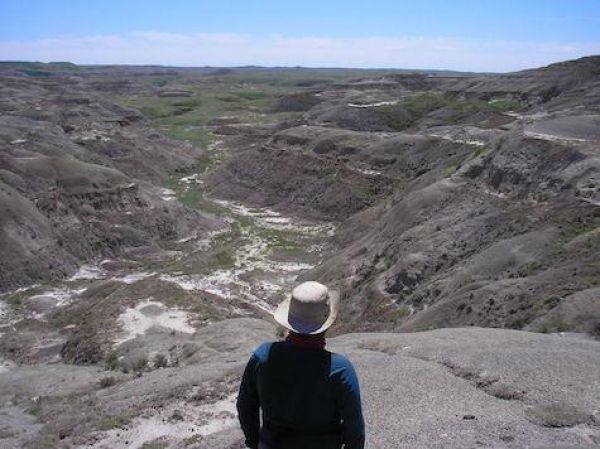It’s known that the primary cause of the mass extinction of dinosaurs, about 66 million years ago, was a meteorite impact. But the exact mechanisms that linked the meteorite impact to mass extinction remain unclear, though climactic changes are thought to have played a part.
To understand how the mass extinction and associated climate changes affected specific ecosystems, a team of McGill scientists has analyzed the microscopic remains of plants from this period, found in the sediment of rivers in southern Saskatchewan. In a recent article in Palaeogeography, Palaeoclimatology, Palaeoecology they show that in this area, local plant communities and ecosystems experienced a long-term shift towards fewer aquatic plants and an increase in terrestrial plants, including trees such as birches and elms. The researchers speculate that this increase was due to the extinction of large plant-eating dinosaurs. They also found, unexpectedly, that changes in rainfall patterns during the extinction event were relatively minor and short-lived.
“This could be important as we look to the future of global warming, where many scientists have predicted that changes in precipitation could have big impacts on humans and ecosystems,” says Peter Douglas from McGill’s Department of Earth and Planetary Scientists and senior author on the paper. “At other times of major climate change in Earth’s history we typically do see evidence for such changes. The absence of such a signal during the most recent mass extinction event is intriguing.”
Read more: McGill University
Researcher overlooking one of the two field sites for the study, the Frenchman Valley in Chambery Coulee Saskatchewan in July 2017. (Photo Credit: McGill University)


